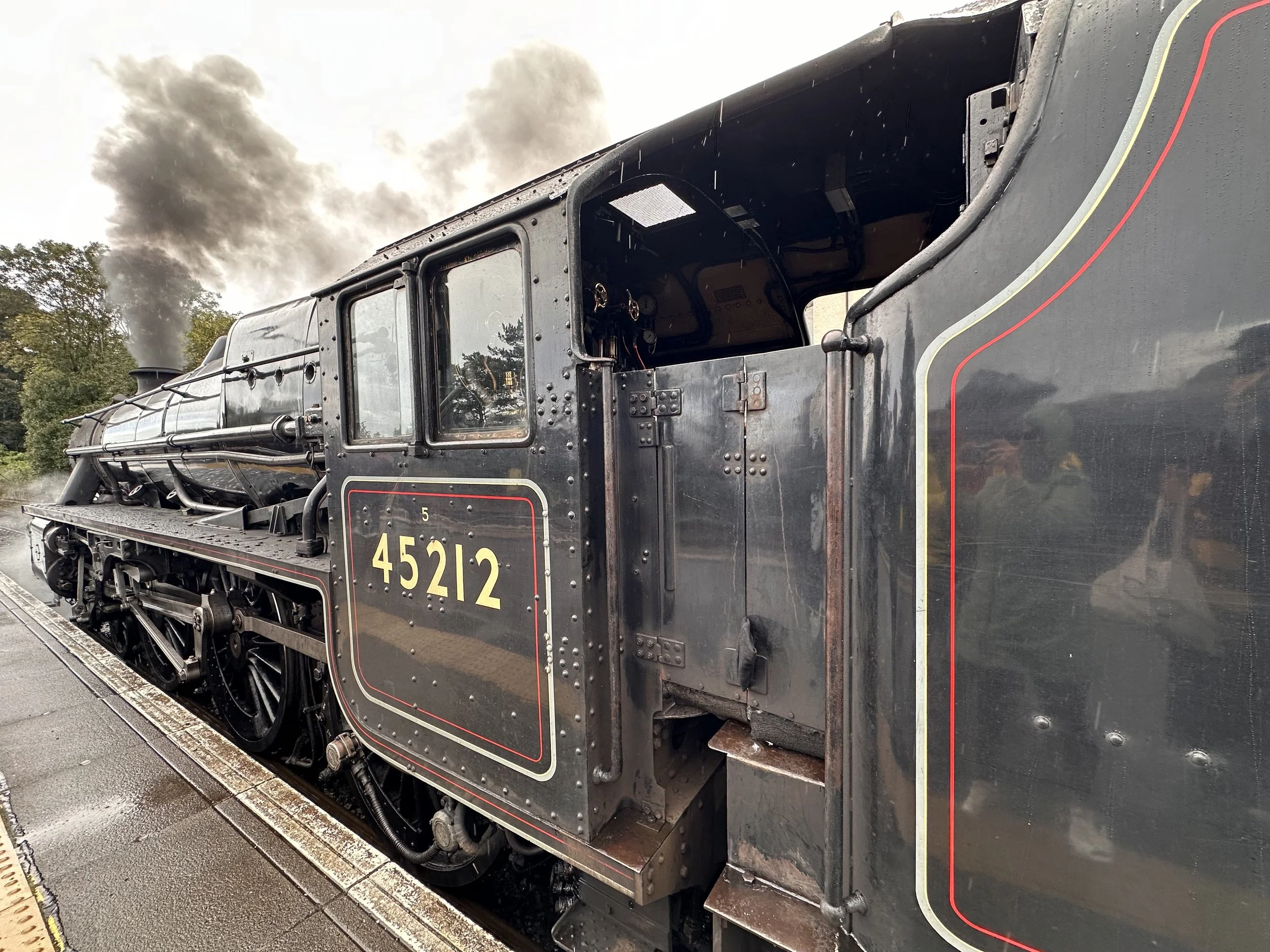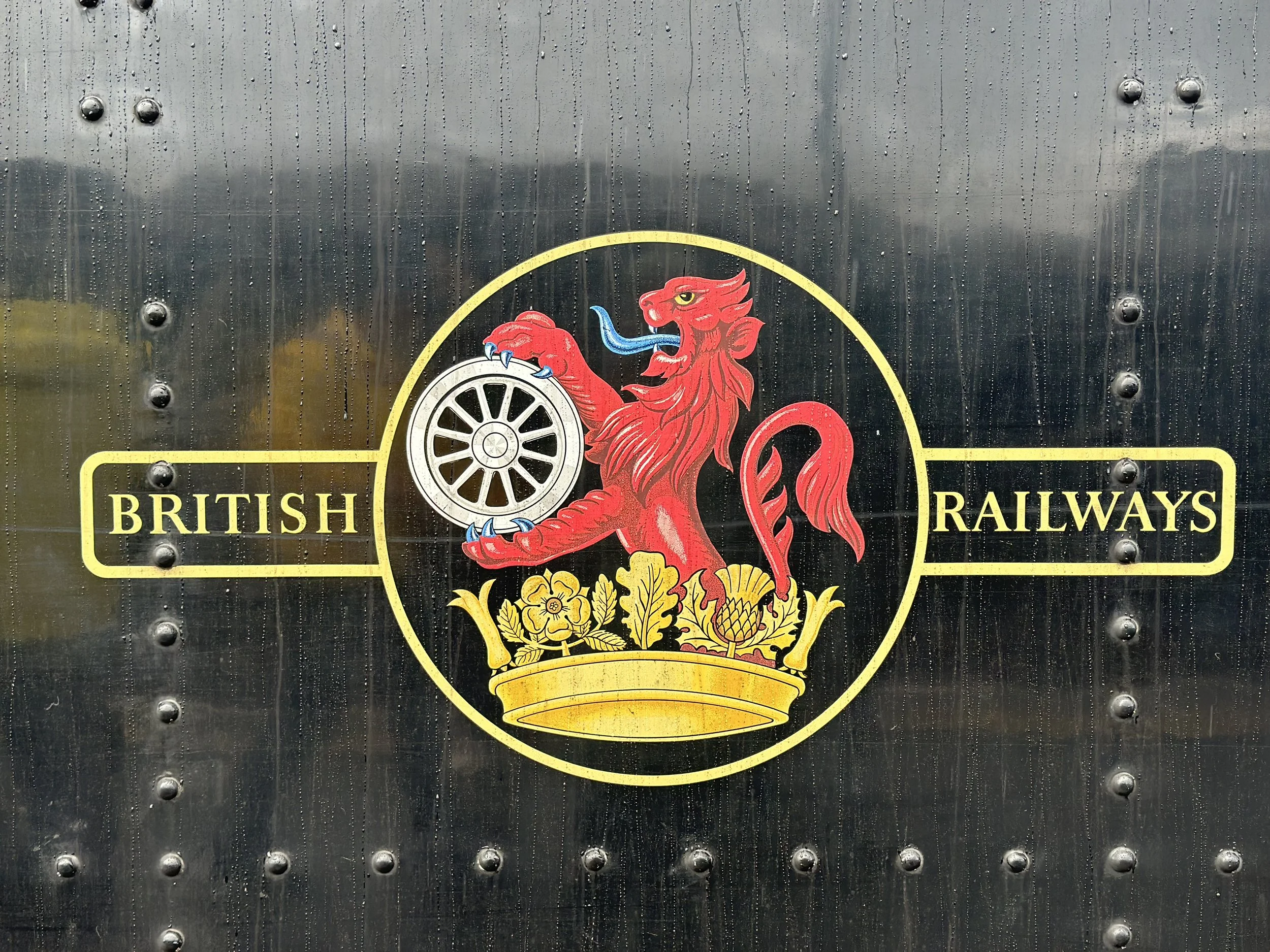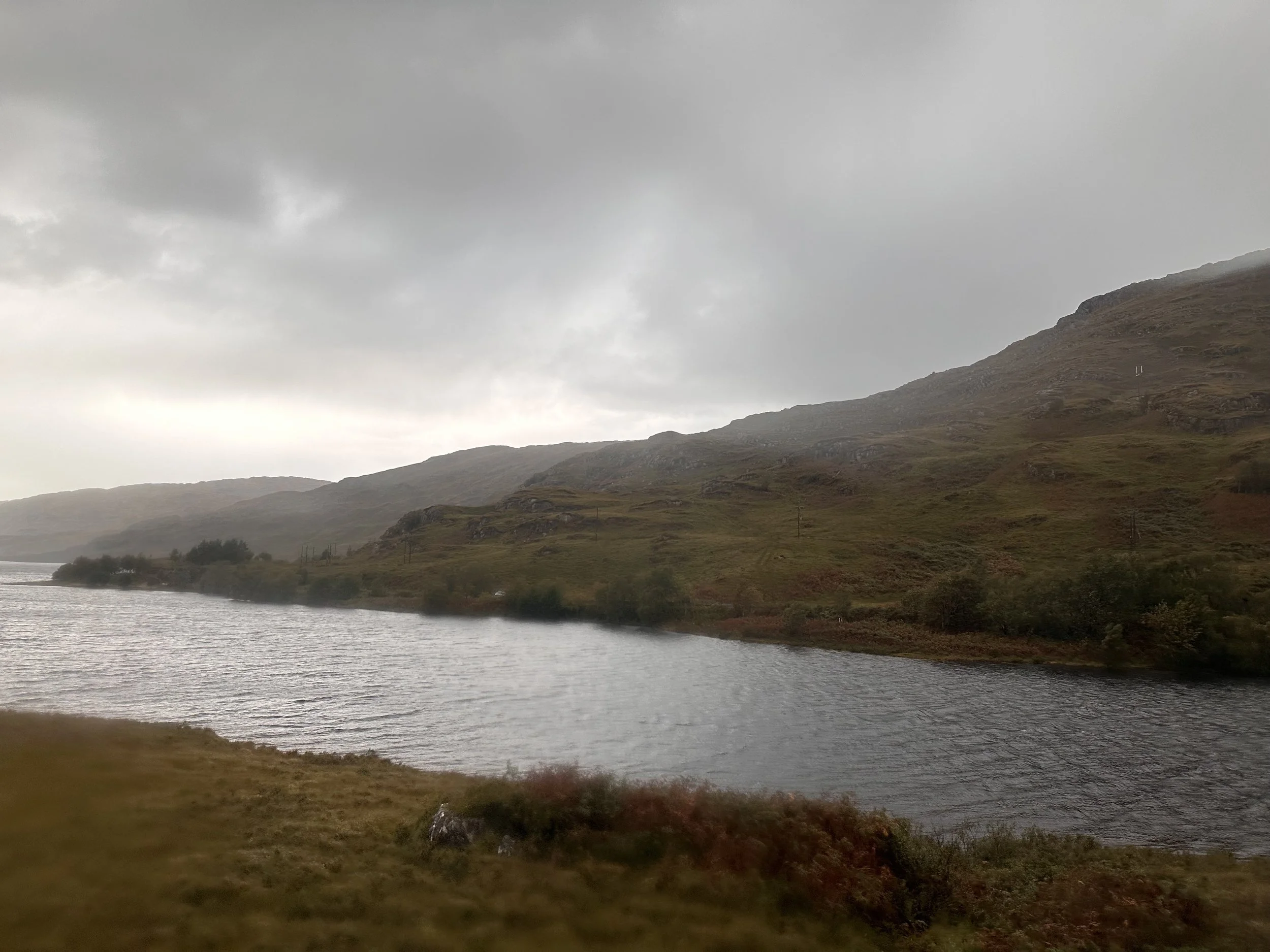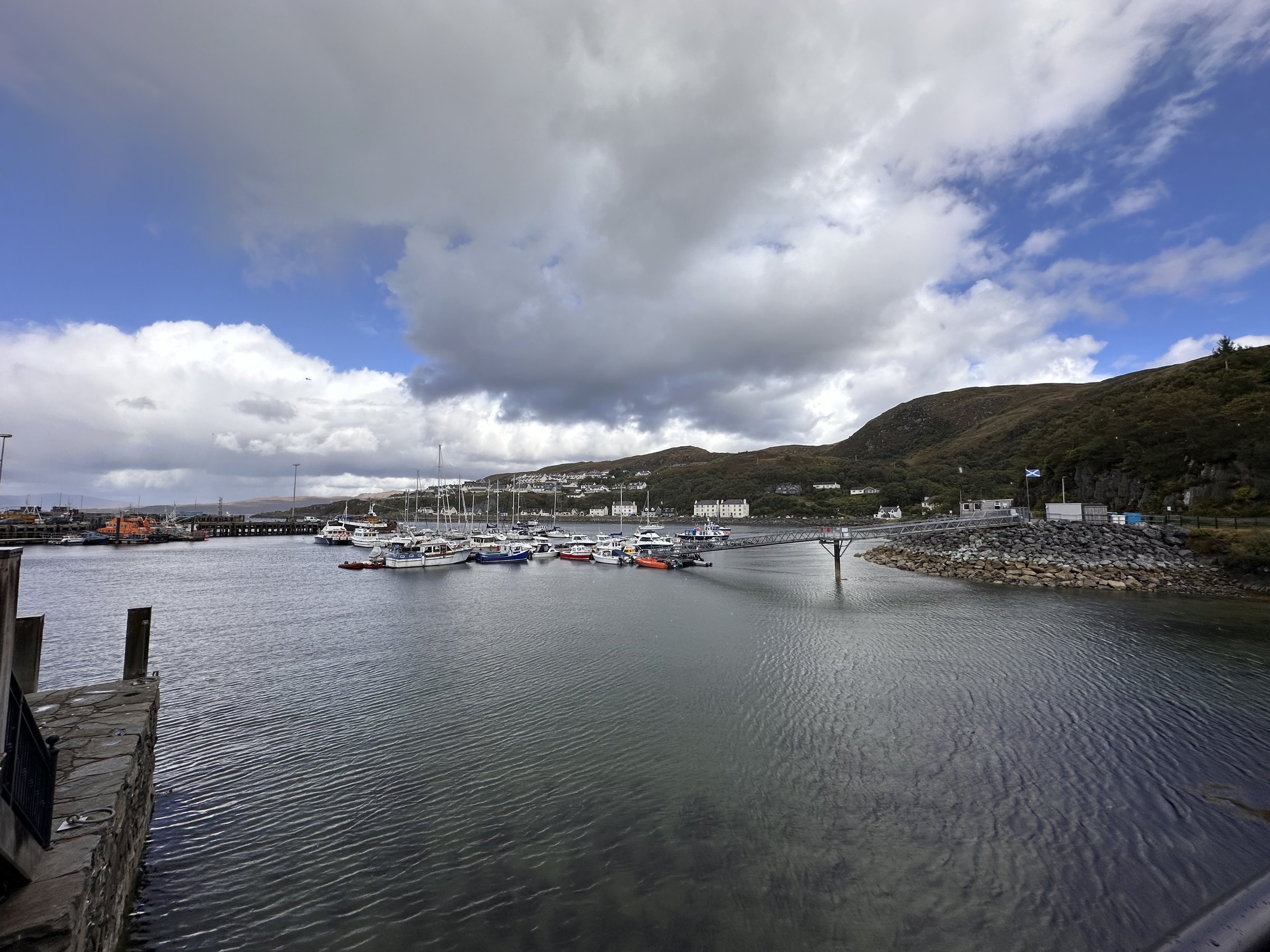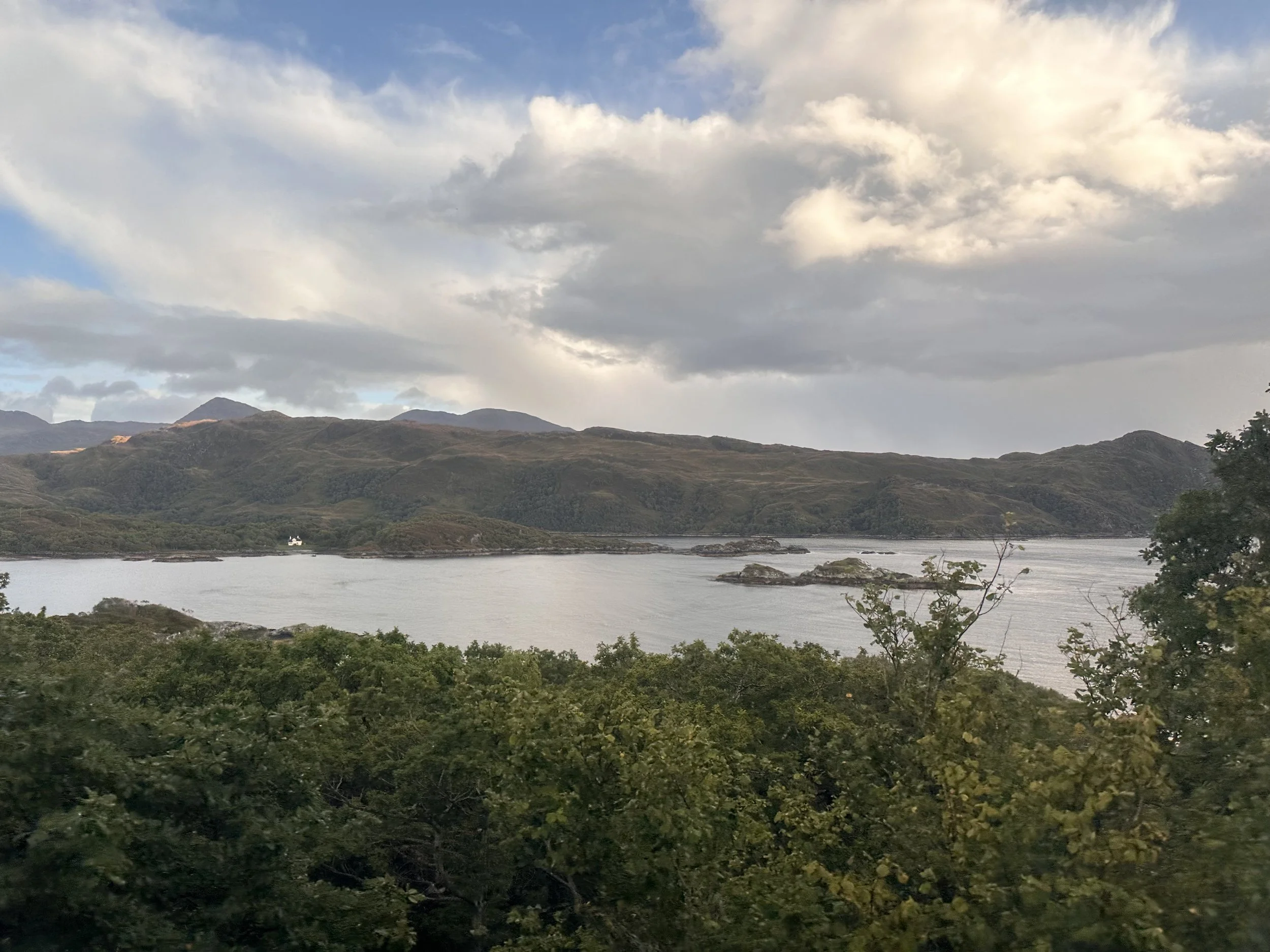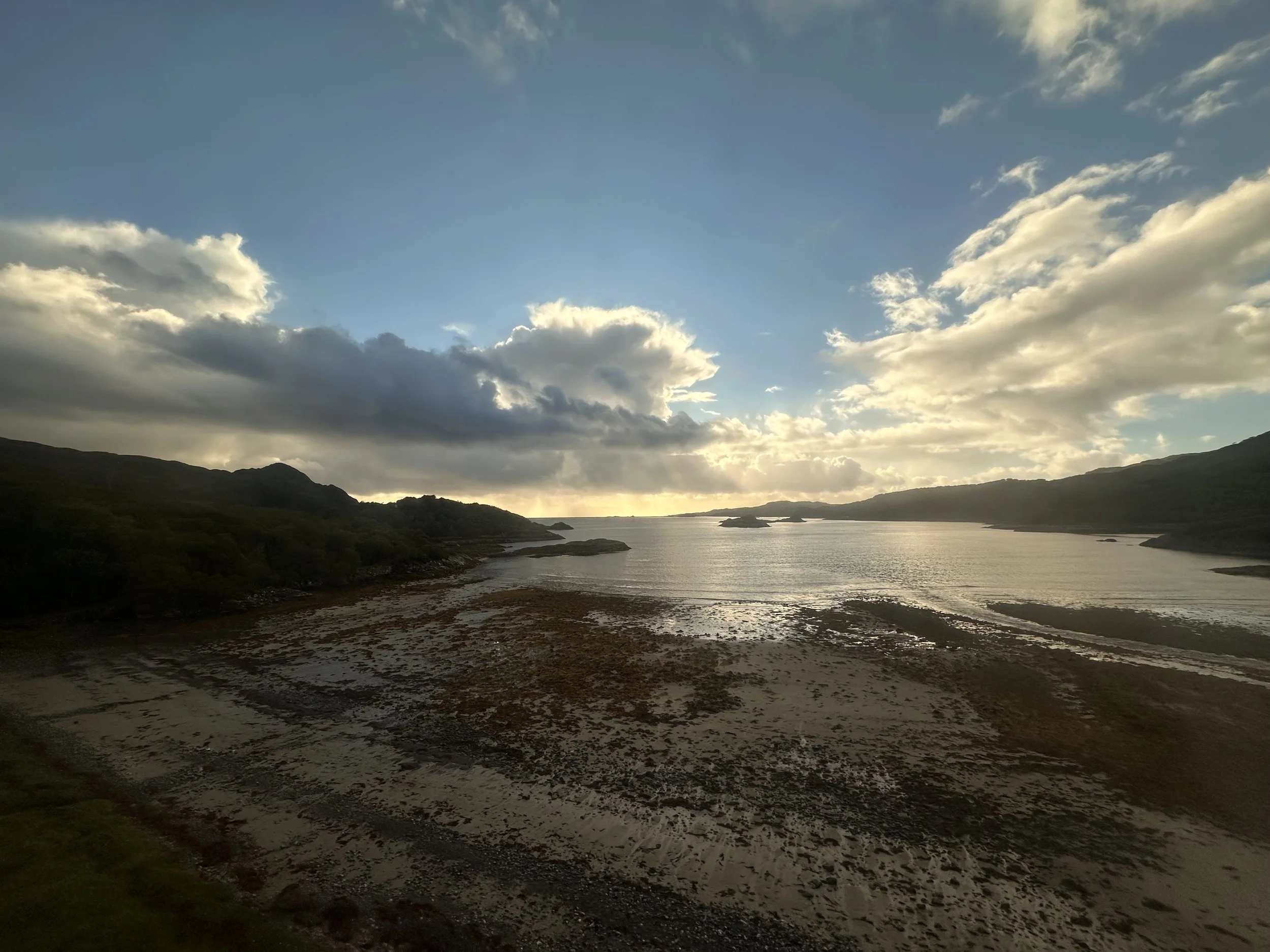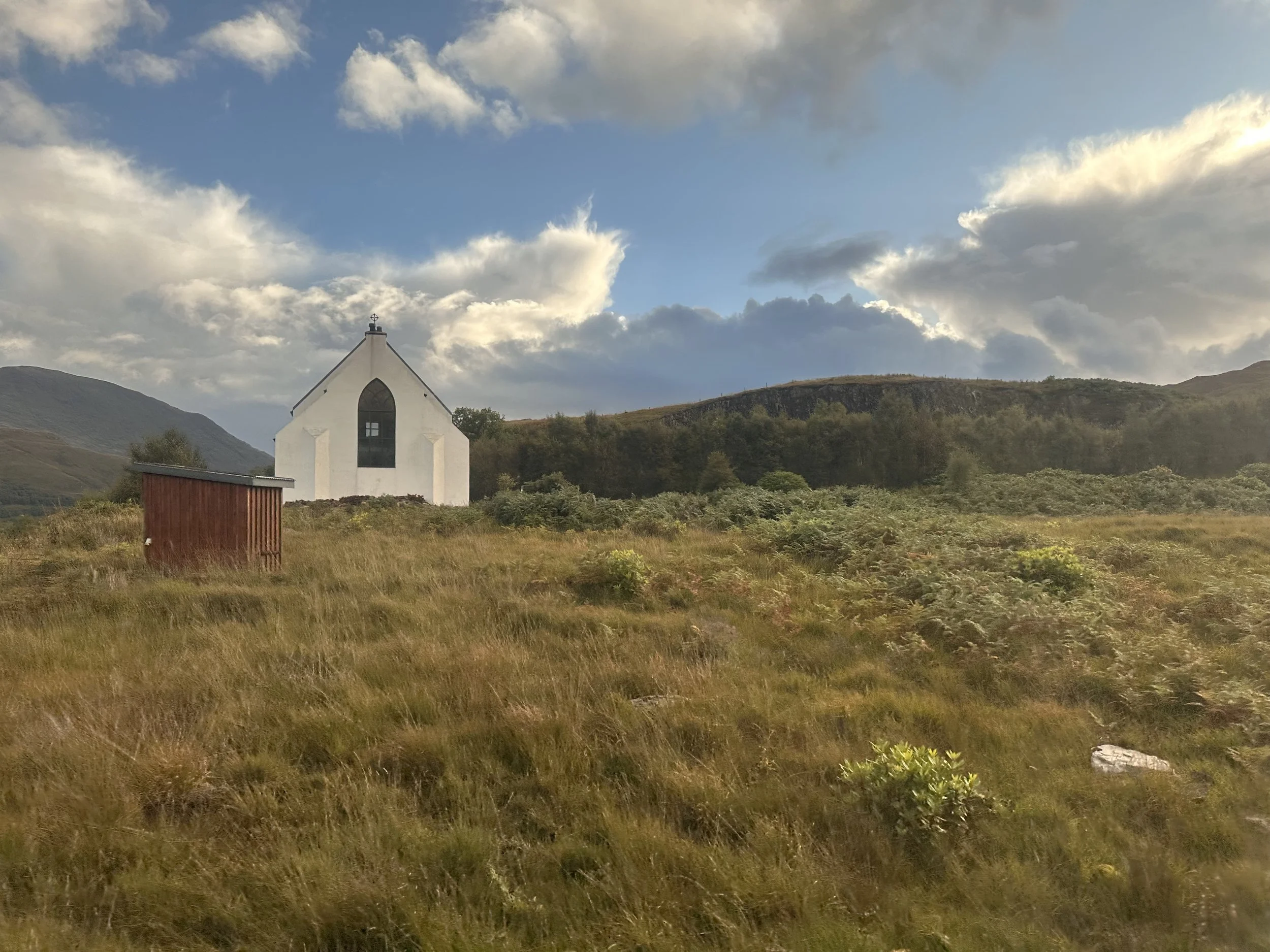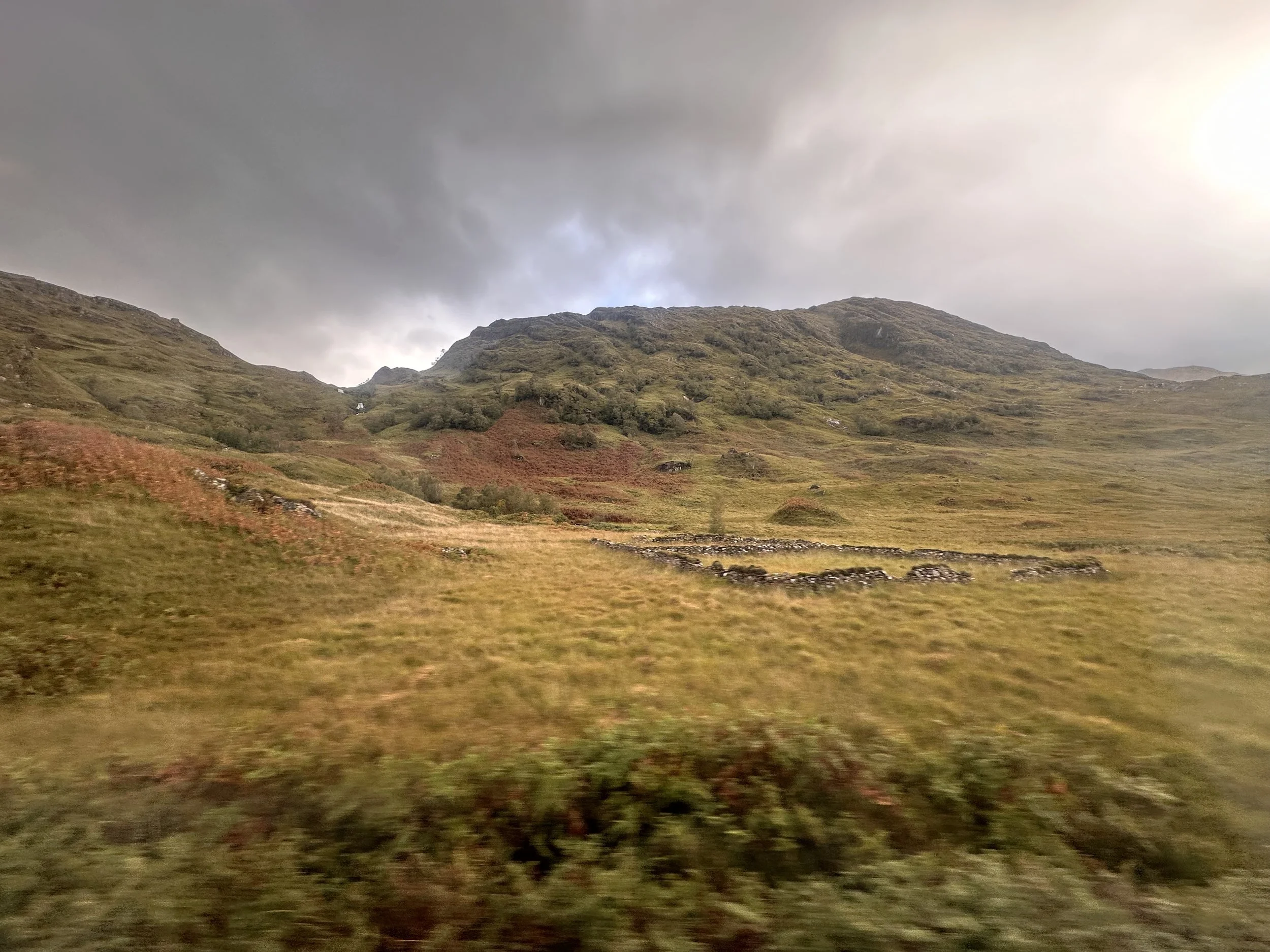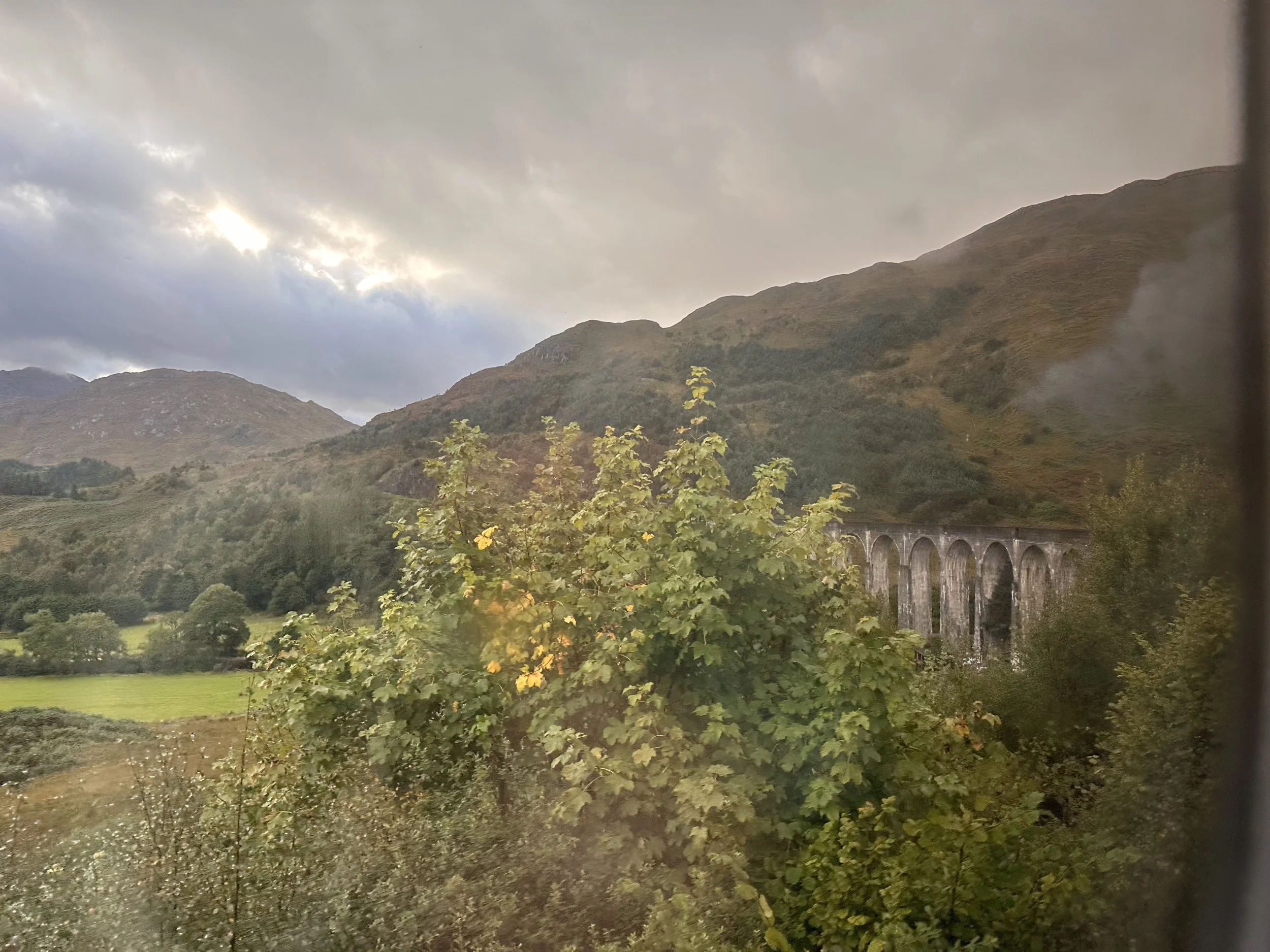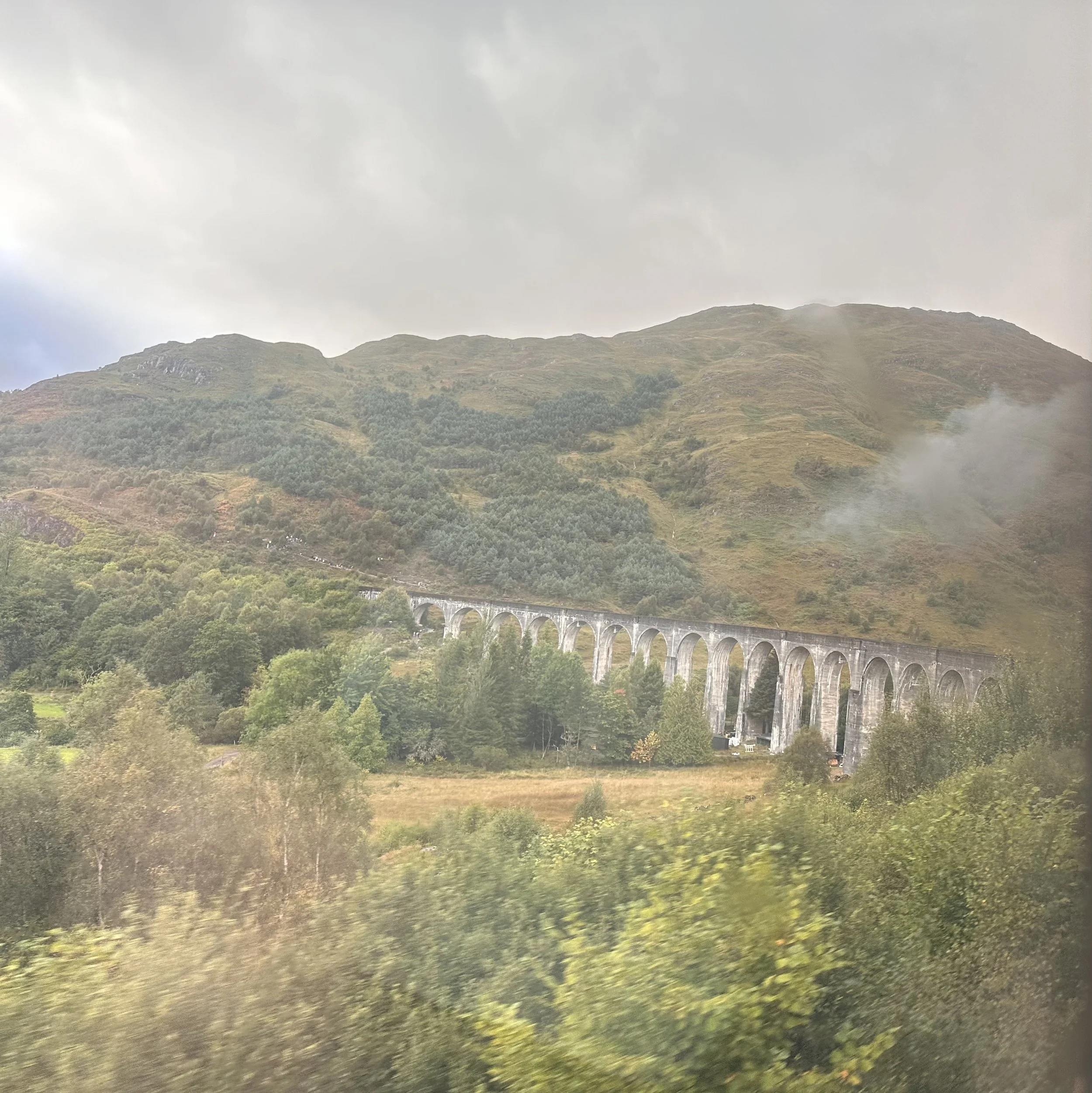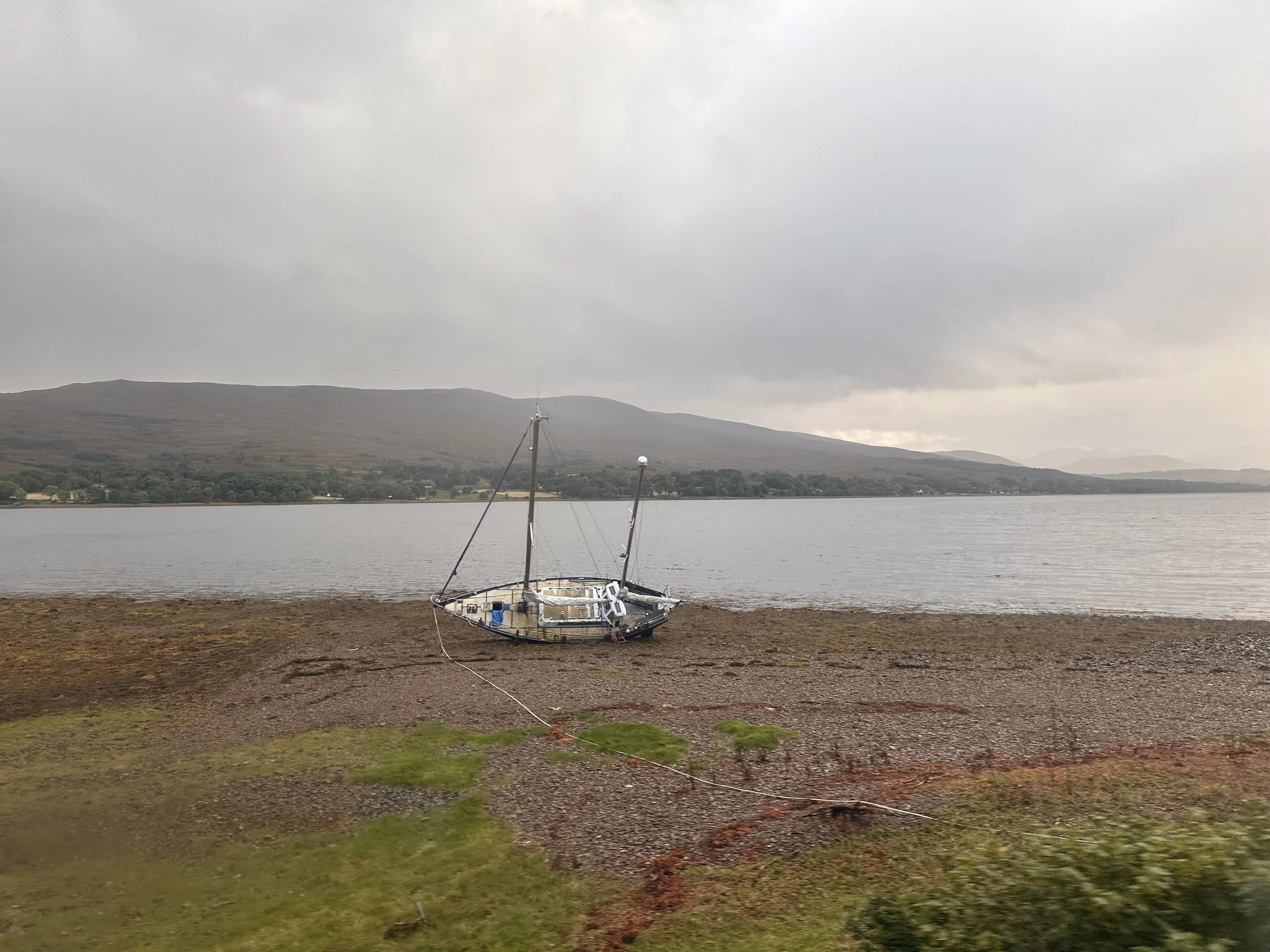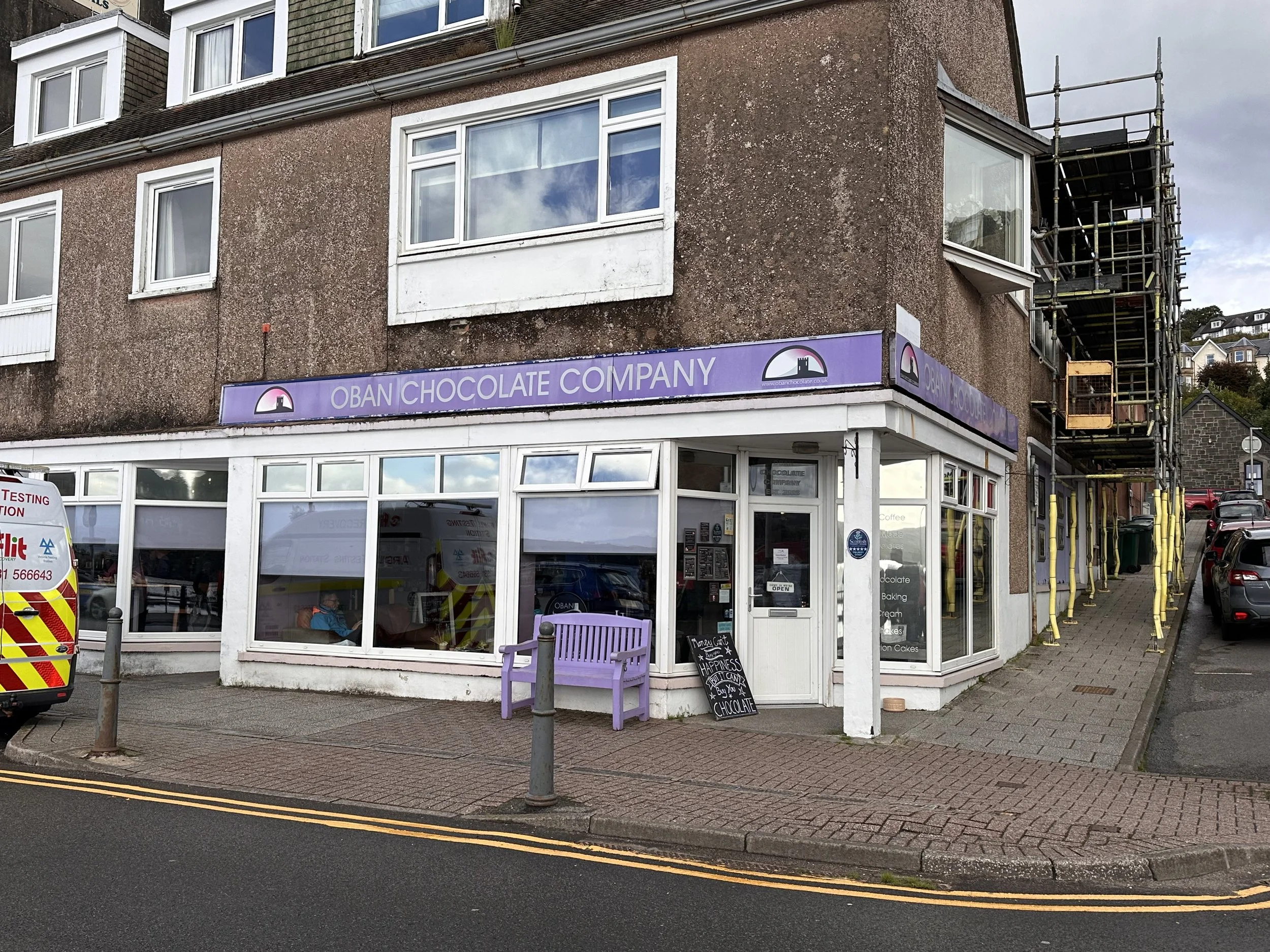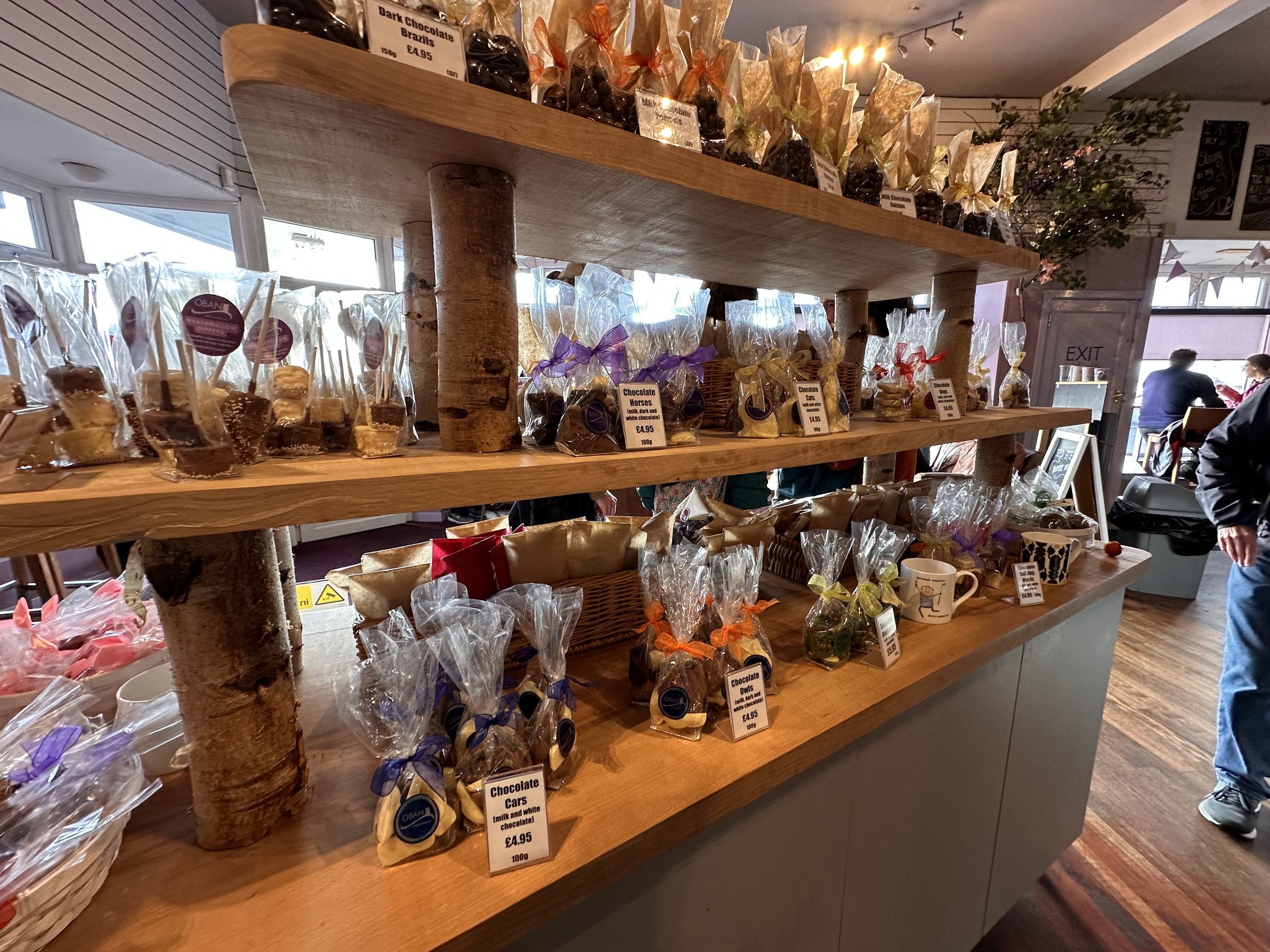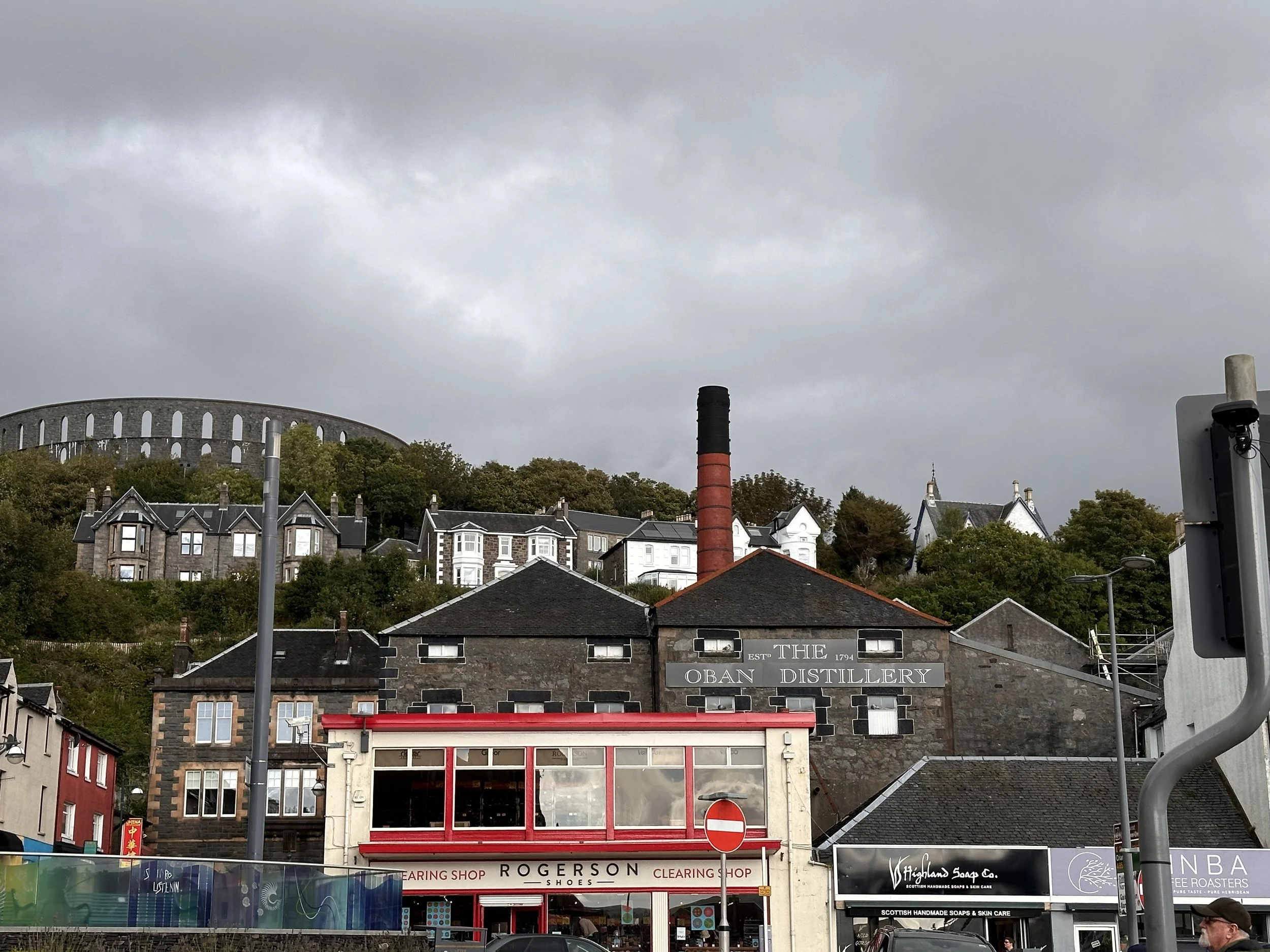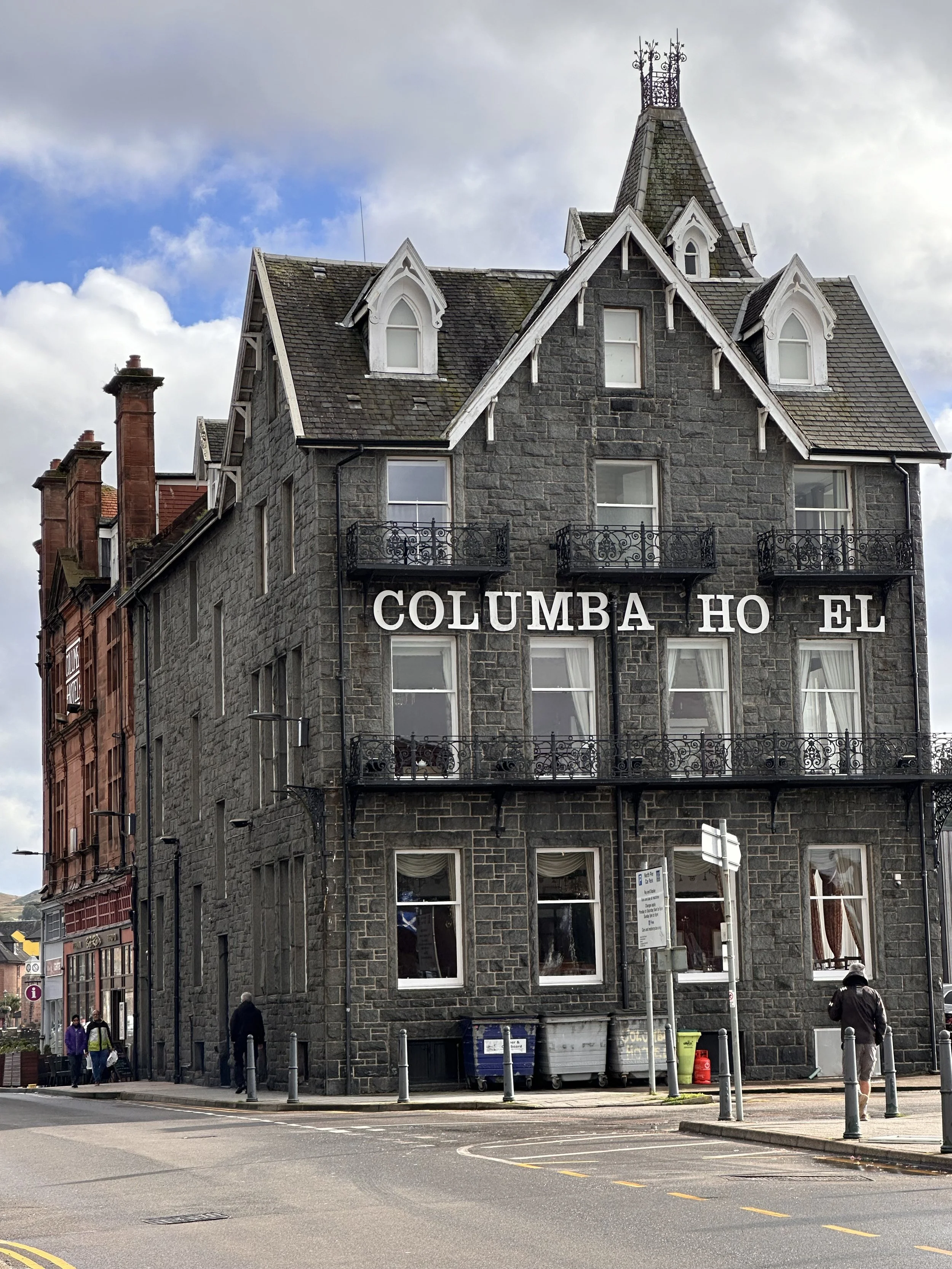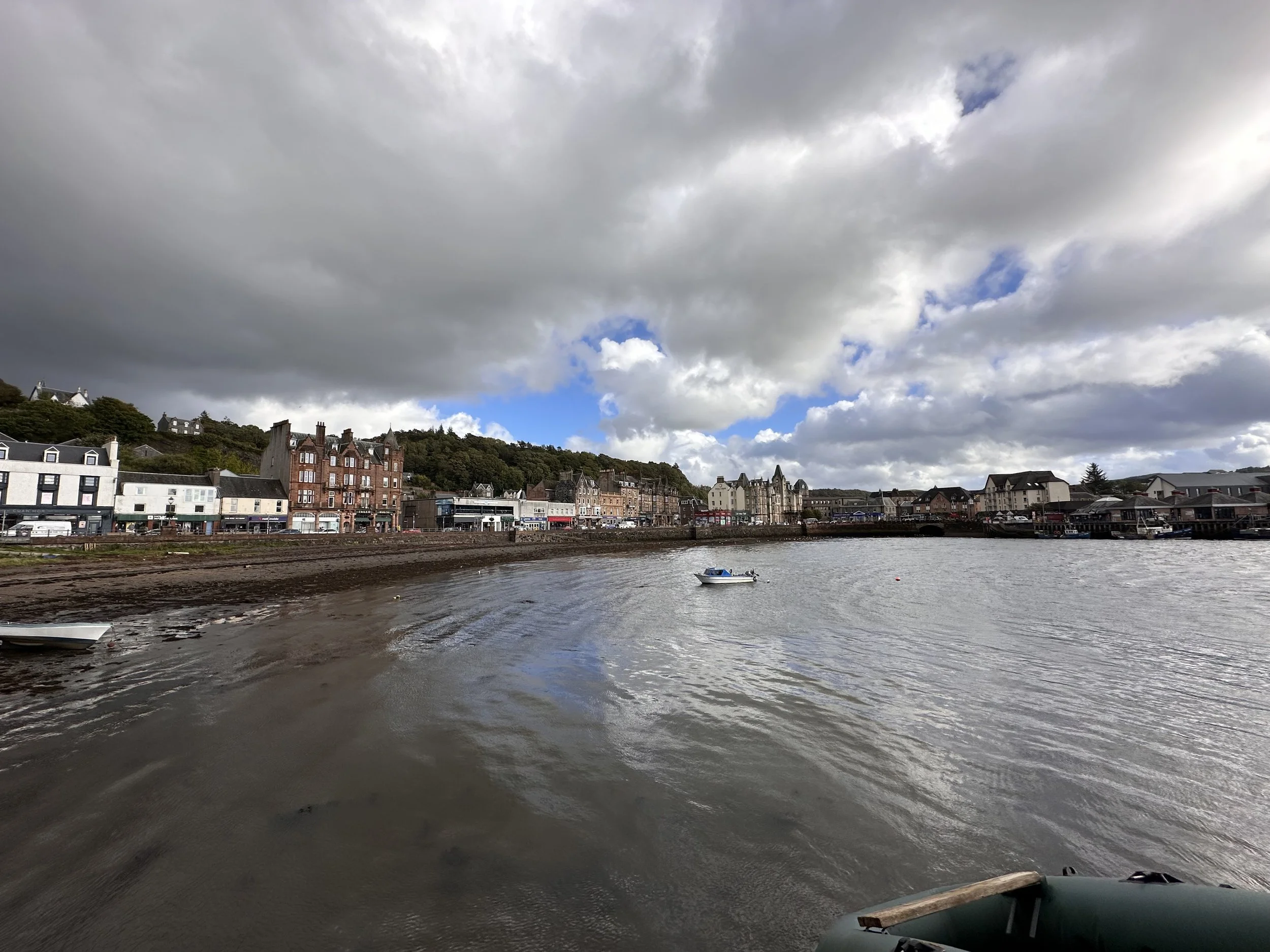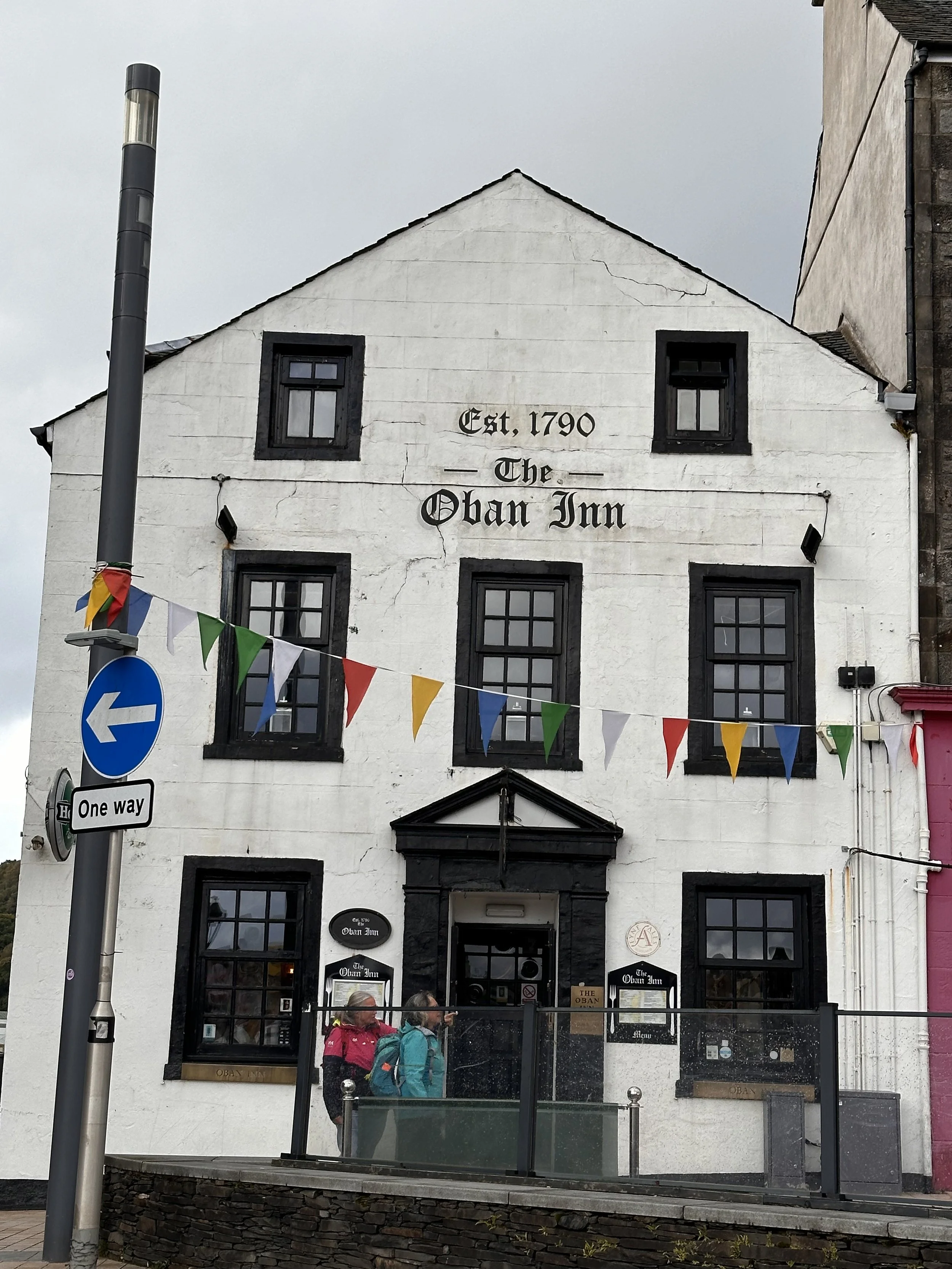Exploring Oban, Scotland
Time needed in this isle: 1-2 nights (2 if you are taking the jacobite train).
Oban is a small, yet very busy, well-preserved Victorian town that was founded on whisky but thrives on tourism. We arrived to the town from the Kennecraig Ferry terminal (about a 1.5-hour drive), straight from Islay, and were amazed at just how “hauntingly Victorian” the town really is. At first glance, it may feel run down and not worth a look. However, once you walk along the bay and really see the architecture, you will find yourself intrigued by what stories these buildings hold.
The below information is a complete guide of the best places to stay, the top rated places to dine and drink, and all there is to see and do. We’ve also included transportation tips, as well as a summary of the history of this magical isle!
Jump To:
Where to Stay
No. 17 The Promenade exceeds all expectations when it comes to the overall design of each and every room you step foot into. The funky, modern speakeasy vibe is every bit as luxe as it is comfortable. We booked the Intimate King, which is Room No. 2. While it is small, it is comfortable, though the luxe, cosy lounge areas make you want to spend more time there than in bed.
Also, they do have a wonderful restaurant on site, Porcini, which was very delicious, making it easy for us on having to figure out dinner (see the “Where to Dine & Drink section for more)! If that isn't your preference, definitely have one of their wonderful cocktails and/or take advantage of their included breakfast (which, they will have you fill out a form at check-in, as well as each morning of your stay, for the next morning).
NOTE: If the room is too small for you, there are plenty of other room options to choose from!
PARKING: There are 10 spots for 19 rooms, so it can be limited. There is also street parking however, it’s paid parking, starting at 9am. You can also find car parks nearby, though it can be a bit of a walk.
other recommendations
Where to Dine & Drink
Coast Restaurant
Modern Scottish restaurant, in a former bank building, offering local seafood, fish and meat dishes.
EE-USK
Local fish and seafood in glass-fronted, modern dining room with high-back chairs and bay views.
Food From Argyll at the Pier
Per their site, “Food from Argyll is a group of passionate producers striving to bring good food to their customers. Living and working in one of most scarcely populated areas of Scotland, our local communities use a wealth of traditional skills to produce our meats, cheeses, fresh milk, ice cream and smoked fish.”
Markie Dans
Festive local pub with a beer garden offering beer, spirits, comfort food & regular live music.
Porcini
Serving a seasonal Italian menu.
Roxy’s Coffee and Tea House
Located in the center of Oban, they serve coffee and tea, along with a wide range of baked goods and traditional Scottish breakfast.
Taste of Argyll Kitchen
Relaxed restaurant serving Highland beef steak pies & burgers made with unique meats like venison.
The Barn Bar
With a focus on local, seasonal and homemade food the menu is in constant rotation to allow the team to provide the very best the area has to offer.
The Manor House
Per their site, “Our mission is to serve seasonal cuisine bringing out the best of the wonderful local products from sea, shore and mountains. Get inspired by our menu, introducing you to the culinary highlights of Oban and the Western Isles that we proudly serve at the Manor House. We respect and cater to all dietary needs and offer a well-balanced selection of dishes for an unforgettable experience in our beautifully restored dining room. We encourage you to make your dinner reservations when booking your stay with us guaranteeing that you avoid stress and hassle finding a dinner spot in busy Oban. Our restaurant is also open to non-resident guests for dinner. Reservations are required.”
Waypoint Restaurant
Fresh produce, seafood, and meat, straight from the land.
Things to See & Do
Historical Exploration
Bonawe Iron Furnace
The Iron Furnace is actually an industrial complex, built in 1753. The site was chosen because there was enough wood in the area for the production of charcoal, as well as the fact that there was enough water pressure in the river to drive a water wheel.
During construction, most of the building materials were brought in from Cumbria. For the furnace to produce pig iron, it first had to be brought up to temperature, which took about one week. The oven was used almost continuously for nine months at a time.
The complex employed as many as 600 people at the height of its operation. The majority of the staff were needed for the collection of timber and the manufacture of charcoal. The daily output could reach up to nearly 3 tons of pig iron, with the annual production being over 770 tons. The majority of the pig iron was taken to offices of the Newland Company in Cumbria to be shipped for further processing.
Dunollie Castle
Standing on a rocky ridge overlooking the sea, Dunollie Castle consists of a 13th-century castle ruin and a 15th-century, four-story tower, still owned by the MacDougall clan. In addition to this, you are able to visit the oldest part of Laird MacDougall’s House, which was used from 1745 - 1950. In it contains a number of artifacts and archives.
It is well worth the visit, as well as the steep climb to the castle for the views, alone!
NOTE: There is a food truck with wonderful baked goods and hot food, as well as a variety of beverages.
Dunstaffnage Castle & Chapel
On an immense rock overlooking the Firth of Lorn, near Oban, stands the remains of one of the oldest stone castles in Scotland and the former stronghold of the MacDougalls.
Built around 1220 by Duncan MacDougall, the son of Earl Somerled, known also as the ‘King of the Isles’, Dunstaffnage Castle was built at the height of the battle between Scotland and Norway for control of the Hebrides and was even once besieged by Robert the Bruce during the Wars of Independence.
Inside the courtyard, visitors will find the remains of the great hall and the ‘new house.’ These 18th century residential compartments are believed to be where Flora MacDonald was held prisoner, having helped Bonnie Prince Charlie evade capture by the Redcoats, following his disastrous defeat at Culloden, in 1746.
Gylen Castle
Gylen castle was built in 1582 by Duncan MacDougall of Dunollie. In 1647, the MacDougalls, who were occupying the castle for Charles I, were besieged by a Covenanting army under General Leslie. The MacDougalls surrendered upon being offered clemency but the Covenanters reneged on their word and slaughtered the defenders in cold blood.
Historic Kilbride
In 1249 Alexander II granted “the see of Argyll the Parish Church of St Bride the Virgin in Lorn”. There are some 319 known graves at Kilbride, dating from as far back as the 13th century to the present day. But, its history goes much deeper. For hundreds or even thousands of years, this has been a special place for prayer, contemplation, and gathering. Kilbride was abandoned in the 19th century and left to ruin, but since 2000, a small group of volunteers have donated time, money, and labor to rescue this important historic site, which can be toured on your own or with a guide, by appointment.
Hutcheson’s Monument
In 1883, Hutcheson was erected in honor of David Hutcheson, the inventor of steam communication in the West Highlands and Islands of Scotland. The monument is an obelisk made out of granite and overlooks Ardantrive Bay.
Loch Awe & Kilchurn Castle
Kilchurn Castle was a fortress, a residence, and later, a garrison stronghold, containing the oldest surviving barracks on the British mainland. Its five-story tower house dominates the complex, with a lower hall, courtyard, and barracks below.
Kilchurn Castle was built in the mid-1400s and it remained the base of the Campbells of Glenorchy for 150 years. After the first Jacobite Rising of 1689, Kilchurn was converted into a garrison stronghold, but was abandoned by the end of the 1700s.
McCaig’s Tower
Built in 1897, McCaig's Tower overlooks the town of Oban in Argyll, Scotland. It was commissioned at £5,000 (equivalent to £620,000 today) by the wealthy, philanthropic banker,John Stuart McCaig. His intention was to provide a lasting monument to his family, as well as to provide work for the local stonemasons during the winter months. His plans allowed for a museum and art gallery with a central tower to be incorporated. His death in 1902 brought an end to construction with only the outer walls completed.
Unique Experiences
Dog Stone
The Scots and the Irish love a good giant tale! The fable of the Dog Stone is about Fin McCool (the same one that created Giants Causeway) who tied his dog, Bran, up to the stone when we went hunting in the Hebrides. As Bran circled and struggled, he wore a groove around the base of the stone with its colossal chain and they say you can still hear its ghostly howls.
While sailing on any of the ferries from Oban you will pass the Dog Stone, which is quite an impressive size even though its been worn down over 450 million years!
Jacobite Steam Train in ft. William
Anyone who is a Harry Potter fan, knows this train as “Hogwarts Express”. It takes you on an 84-mile round trip through many notable and picturesque places, including the Glenfinnan viaduct and Dumbledore’s “final resting place”.
When you get to Mallaig, note that there is not much to do there. There are a couple of shops and a couple of pubs. Definitely bundle up and either plan to walk around or pop into a pub for the next 1.5 hours.
WHEN TO MAKE RESERVATIONS: Reservations typically start for the following year about 10-11 months in advance and they fill up within a few days. Make sure to book the minute reservations become available for your date.
BEST EXPERIENCE: We recommend first class and adding on the tea service to your journey. In addition, if you can, add on the special whisky option as Ben Nevis Whisky has created something special for the Jacobite Steam Train.
TIP FOR ECONOMY/FIRST WITHOUT TEA SERVICE: Bring food and drink with you as they offer nothing for those that do not book the tea service.
The Oban Hills Hydropathic Sanatorium
The Oban Hills Hydropathic Sanatorium was a proposed Hydropathic Hotel in Oban. Construction of the hotel began in 1881 on a hill east of the downtown area, overlooking the town and the harbor. It was never completed, due to financial difficulties and currently lies in ruins.
Unique Experiences
Per their site, “Established in 2003 by local couple Stewart and Helen MacKechnie, Oban Chocolate Company is a unique, independent chocolate factory, cafe and shop.” They serve handmade chocolates, milkshakes, hot chocolates, coffees, homemade cakes, and chocolatey treats.
Oban Distillery
Founded in 1794, the Oban Distillery, founded by Hugh and John Stevenson who founded the distillery and who brought the town to life, is still existing in the same spot over 200 years ago. However, it was the initial improvements of J. Walter Higgin which put Oban Single Malt Scotch Whisky in a different league and today, the seven current team members continue to follow in his footsteps while also keeping the history alive.
Walking Tours
ArdchattAn Priory Gardens
Per their site, “A garden has existed at Ardchattan for over 700 years, since Valliscaulian monks, from a little know order in Burgundy, first settled there, on the north shore of Loch Etive. Facing south, with spectacular views over Loch Etive, one can look east to Ben Cruachan and west to the hills of Mull, the monks chose their site well.”
“The monastic origins can be traced in the ruins of the monk’s chapel, accessed from the garden. These ruins, in the care of Historic Scotland, are also open to visitors, however the main house and the various cottages around the garden are private family homes.”
Connel Bridge & the Falls of Lora
The Falls of Lora is a tidal rapid located 6 miles to the north east of Oban, at the seaward end of Loch Etive.
This naturally occurring phenomenon is generated when the tidal level in the Firth of Lorn drops below the level of the water in Loch Etive. The Falls are a popular destination for kayakers and divers as well as a stunning sight for visitors and photographers. One of the best views of the falls is from the car park viewpoint in Connel village.
Glencruitten Cathedral of Trees
Businessman, Alexander Mackay, bought the Estate of Glencruitten in 1916 after his former home in Broughty Ferry burned down. He immediately went to work on a forestation project over much of the estate, which at the time, was mostly moorland and rough grass.
As the years passed, Mackay noticed that the trees in one valley, a beautiful spot with a view towards Ben Cruachan, failed to flourish. Rather than abandon the area, he decided to redeem it by draining the land and and creating a ‘Cathedral of Trees’, in 1921.
Loch Etive
Loch Etive is a sea loch that runs inland north of Oban on the west coast of Scotland.
Divided from the sea by the tidal Falls of Lora waterfall in the village of Connel, Loch Etive boasts a resident seal colony and some of the most dramatic mountains in Scotland on either side. The loch is 20 miles (31km) long, 1 mile (1.6km) wide and up to 150m deep.
Oban Guided Private Walking Tour
Discover the highlights of the seaside town of Oban on this guided walking tour. With a private guide, discover why the city is the seafood capital of Scotland and see several monuments including McCaig’s Tower, St. John’s Cathedral, and the Oban War Memorial. While you explore your guide provides information on the history of the city and shares stories of ancient clans and Viking warlords.
Oban Town Centre
Oban Town Centre is where the heart of Oban lies. Right on the water, grab lunch or a snack and watch the boats come in and out of the marina. Stroll along the sidewalks and do a little shopping. Or, sit on a bench and listen to the bagpipes.
Private Tour in Oban, Glencoe, Western Highlands, Lochs & Castles
Oban is often regarded as the “Gateway to the Hebrides” and not only that it has some of the finest seafood in Scotland plus the added bonus of the famous Oban whisky distillery. This tour has it all. Impressive castles, famous lochs, mountain scenery and some very beautiful architecture with one of our favourite buildings in Scotland St Conan’s Kirk. Learn about Clan rivalries from your guide and visit the family seat of the Clan Campbell Inveraray Castle.
Pulpit Hill
Pulpit Hill is one of two spectacular places to view Oban (the other being McCaig’s Tower). This viewpoint gives excellent views beyond the island of Kerrera, which sits across Oban Bay.
How to Get Around
By car
Regardless if you’re coming from Edinburgh or Glasgow, the approximate time it will take to get to Oban is 2.5 hours.
From Edinburgh
Take B901, Inverleith Terrace and E Fettes Ave to Ferry Rd/A902
Take M9, A84 and A85 to Corran Esplanade in Oban
At the roundabout, take the 1st exit onto Corran Esplanade
From Glasgow
Get on M8 from Port Dundas Rd and A804
Follow M8, A82 and A85 to Corran Esplanade in Oban
At the roundabout, take the 1st exit onto Corran Esplanade
By rail
The train ride from Edinburgh is 3 hours and 58 minutes. The train ride from Glasgow is 3 hours and one minute.
A History Summary
The earliest finds in Oban are from the Neolithic area, as well as the Iron Age (funerary purposes), and 7th and 9th centuries (as a homestead).
18th century - In 1714, the Renfrew trading company established a storehouse there as a local outlet for its merchandise, 80 years later, and a distillery was born, which changed the town forever.
19th century - A royal charter elevated the town’s status to a burgh of barony. A few years later, Sir Walter Scott wrote The Lord of the Isles about the town, which resulted in more tourism, which resulted in another elevated status of “Parliamentary Burgh”. As a result of all of this, rail transportation reached Oban in 1880, which brought a lot more industry but also some unfinished buildings that were quite ambitious (McCraig’s Tower and the Sanitorium).
20th century - While the initial building of the Glencruitten House (a Scottish-style castle) was built very late in the 19th century, it was added on and renovated over the course of decades and eventually, its things sold at auction. Also, WWII found Oban as a naval base, and during the cold war, was used for the first Transatlantic Telephone Cable (TAT-1), which came ashore at Gallanach Bay. This carried the Hot Line between the US Presidents and USSR General Secretaries.
1950s - Today - The principal industry has remained tourism, though the town is also an important ferry port, acting as the hub for Caledonian MacBrayne ferries to many of the islands of the Inner and Outer Hebrides.

